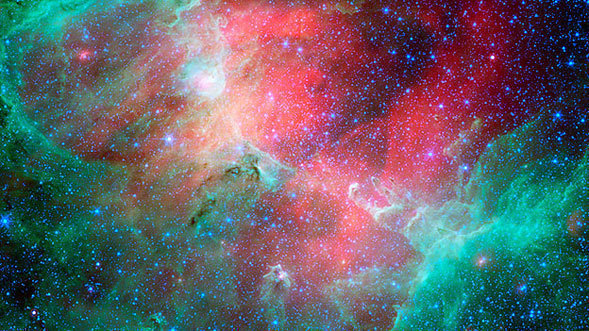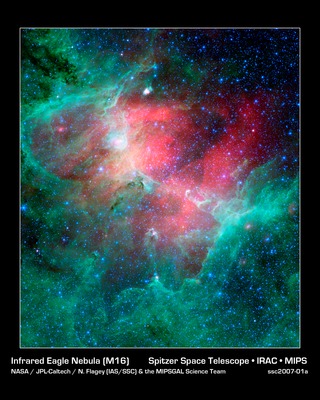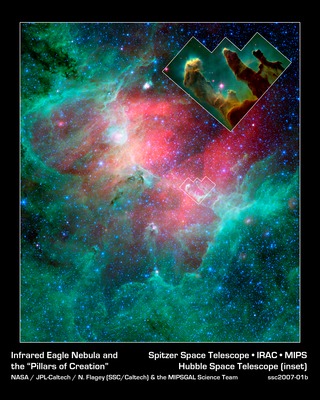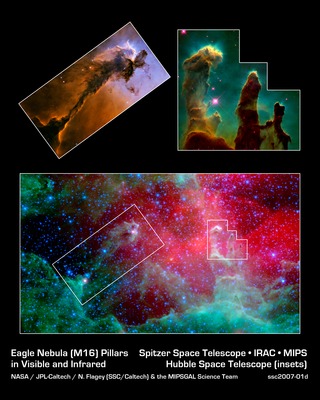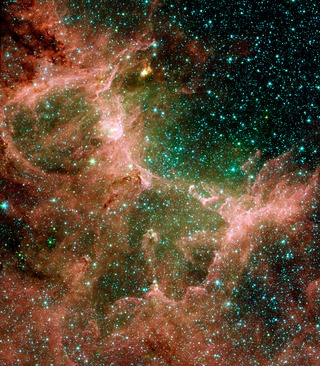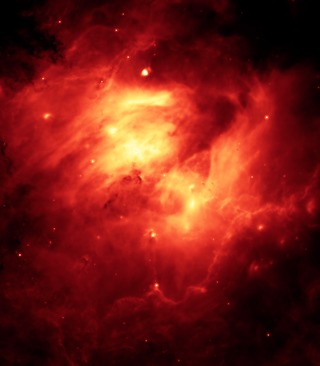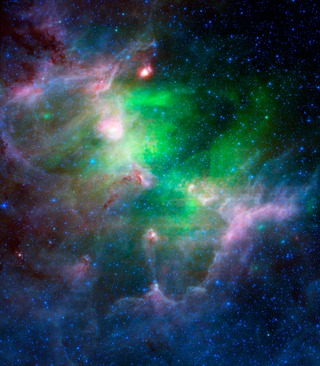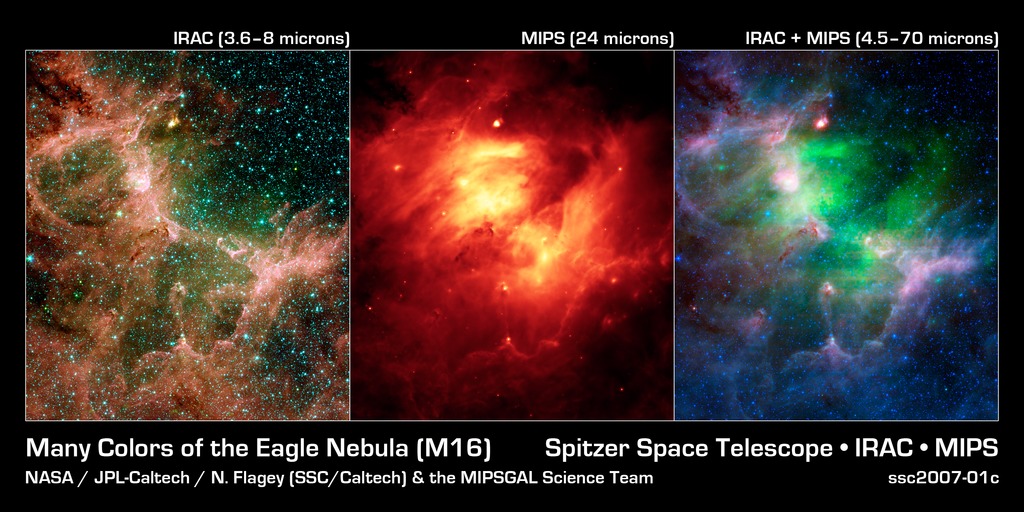
Credit: NASA/JPL-Caltech/N. Flagey (IAS/SSC) & A. Noriega-Crespo (SSC/Caltech)
Observation • January 9th, 2007 • ssc2007-01c
ssc2007-01c
This set of images from NASA's Spitzer Space Telescope shows the Eagle nebula in different hues of infrared light. Each view tells a different tale. The left picture shows lots of stars and dusty structures with clarity. Dusty molecules found on Earth called polycyclic aromatic hydrocarbons produce most of the red; gas is green and stars are blue.The middle view is packed with drama, because it tells astronomers that a star in this region violently erupted, or went supernova, heating surrounding dust (orange). This view also reveals that the hot dust is shell shaped, another indication that a star exploded.The final picture highlights the contrast between the hot, supernova-heated dust (green) and the cooler dust making up the region's dusty star-forming clouds and towers (red, blue and purple).The left image is a composite of infrared light with the following wavelengths: 3.6 microns (blue); 4.5 microns (green); 5.8 microns (orange); and 8 microns (red). The right image includes longer infrared wavelengths, and is a composite of light of 4.5 to 8.0 microns (blue); 24 microns (green); and 70 microns (red). The middle image is made up solely of 24-micron light.
About the Object
- Name
- Eagle Nebula • Messier 16 • M16 • NGC 6611
- Type
- Nebula > Type > Star Formation
- Star > Evolutionary Stage > Protostar
- Star > Evolutionary Stage > Supernova
- Distance
- 6,500 Light Years
Color Mapping
| Band | Wavelength | Telescope |
| Infrared | Spitzer IRAC | |
| Infrared | Spitzer MIPS |
Astrometrics
- Position (J2000)
- RA =18h 18m 48.4s
- Dec = -13° 46' 7.3"
- Field of View
- 28.0 x 32.0 arcminutes
- Orientation
- North is 91.7° left of vertical
